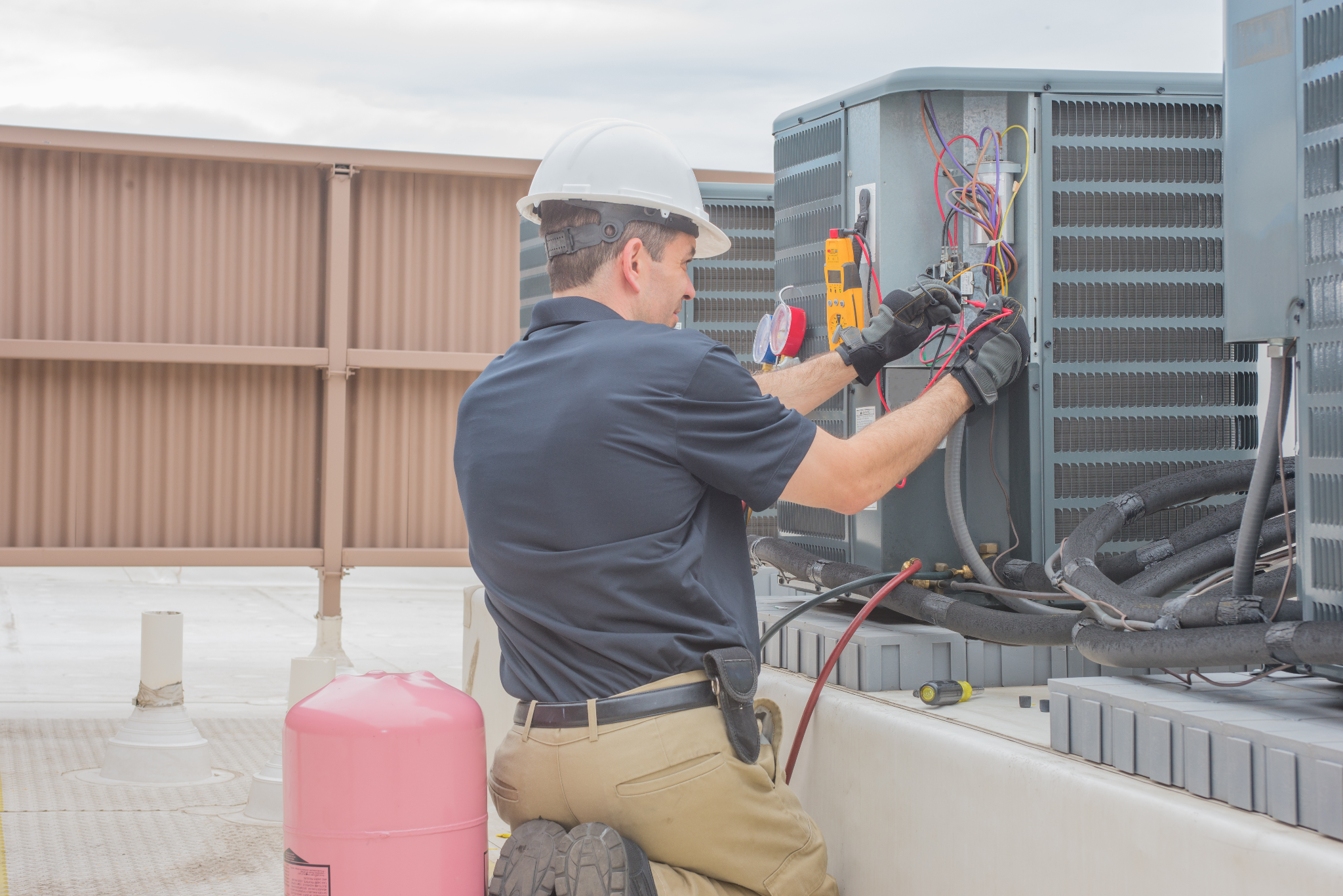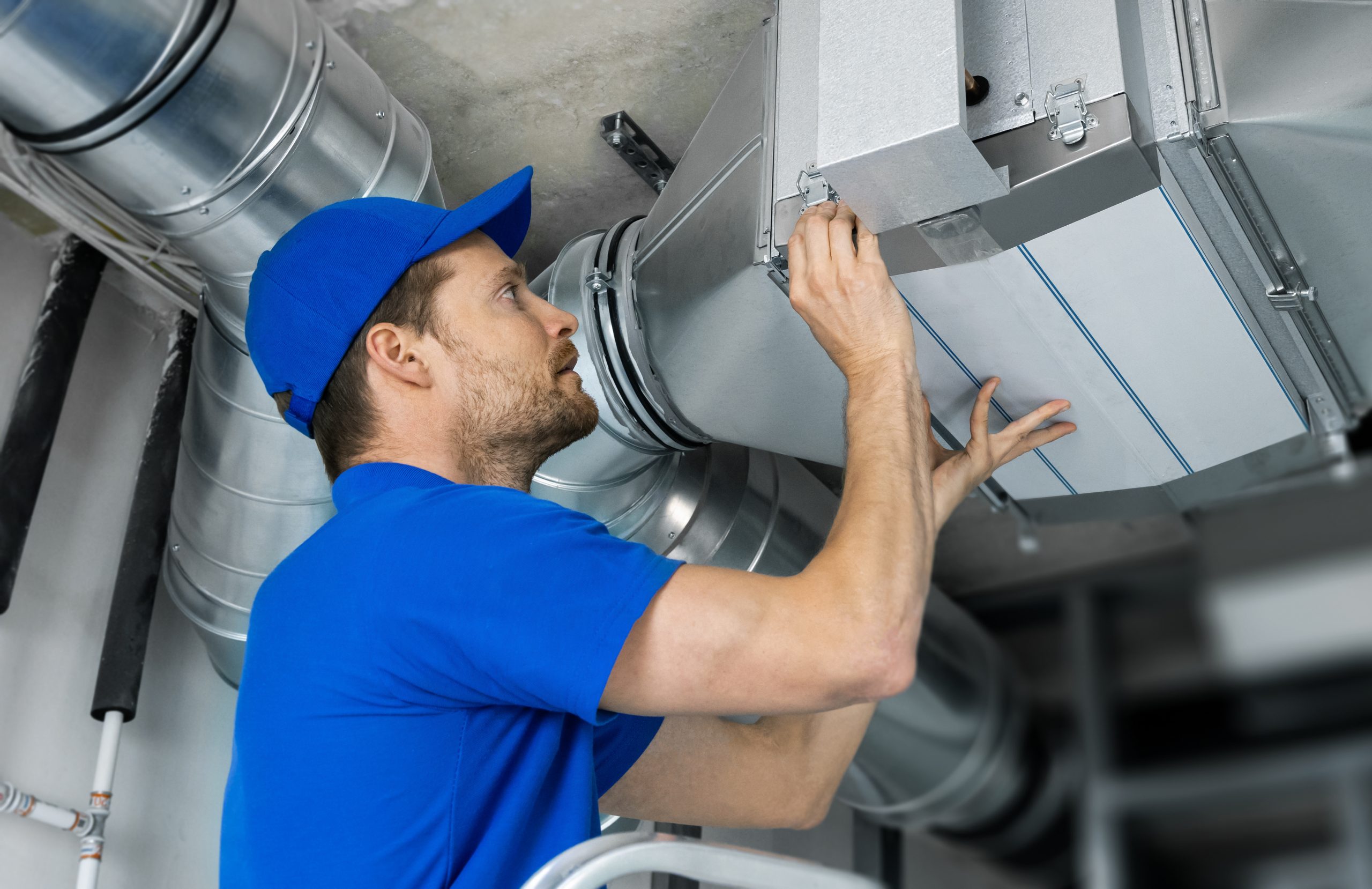Everything You Should Check During heat pump service
Everything You Should Check During heat pump service
Blog Article
Just How a Heatpump and Heater Collaborate to Optimize Your Home's Home heating Effectiveness
Recognizing how a heatpump and heating system work with each other is essential for homeowners seeking effective home heating options. Each system has its staminas, supplying a well balanced strategy to home comfort. The warm pump excels in modest temperature levels, while the furnace supplies rapid warmth throughout extreme cold. This synergy not only minimizes power prices yet also enhances the life expectancy of both appliances. What factors influence this partnership, and exactly how can home owners optimize their benefits?
Comprehending Heat Pumps: Exactly How They Function
Many individuals might be strange with their inner functions, warmth pumps play an essential duty in modern heating systems. These devices run by moving warmth from one location to another, utilizing the principles of thermodynamics. In chillier months, a heatpump extracts heat from the outside air, ground, or water, and transfers it inside to warm up the space. On the other hand, during warmer months, it can turn around the procedure, functioning as an ac unit by expelling warm from inside to the outside.Heat pumps include an evaporator, expansion, condenser, and compressor valve. The refrigerant within the system absorbs heat as it evaporates at low temperature levels and stress. The compressor after that increases the pressure and temperature level of the cooling agent, enabling it to launch warm as it condenses. This reliable procedure can significantly decrease energy consumption contrasted to traditional heating approaches, making warm pumps a sustainable option for environment control in homes.
The Role of Furnaces in Home Home Heating
Heaters play a crucial role in home heating by offering a trustworthy resource of heat throughout the cooler months. They operate by generating warm via combustion or electric resistance, dispersing it throughout the home through ducts or radiant systems. The effectiveness of a heater is frequently determined by its Annual Fuel Usage Efficiency (AFUE) ranking, which shows just how successfully the system transforms gas into heat.Furnaces can utilize numerous energy sources, including gas, propane, electricity, or oil, permitting property owners to pick the most ideal alternative for their demands. Unlike heatpump, which might struggle in extreme cold, furnaces keep consistent performance, ensuring that interior temperatures stay comfortable no matter outside problems. Furthermore, modern-day heaters usually come furnished with innovative technology, such as smart thermostats and variable-speed blowers, enhancing their performance and responsiveness. This adaptability makes furnaces an important component in comprehensive home heating approaches.

Advantages of Utilizing Both Systems With Each Other
Integrating the strengths of both heaters and warmth pumps can lead to a much more effective and efficient home heating remedy. Making use of both systems enables house owners to take advantage of the heatpump's power efficiency throughout milder temperatures while depending on the furnace for even more severe cold problems. This double strategy can considerably decrease power prices, as heatpump consume less power than conventional heating approaches when temperatures are moderate.Additionally, utilizing both systems together can boost convenience levels in the home. Warm pumps can give constant, even home heating, while heating systems can quickly elevate ambient temperatures when needed. Moreover, the integration of both systems can prolong the life-span of devices by lowering damage on each device, as they share the work. Eventually, homeowners can take pleasure in a balanced, economical heating service that adjusts seamlessly to differing climate problems, making sure a warm and inviting home throughout the winter season.
Exactly How Warmth Pumps and Furnaces Complement Each Various Other
They produce a complementary heating system that takes full advantage of efficiency and comfort when homeowners integrate warmth pumps and furnaces. Warmth pumps operate by moving warmth from the outdoors air or ground, making them highly reliable in moderate climates. They succeed during milder temperature levels, supplying cost-effective home heating. On the other hand, furnaces generate warm through combustion or electrical resistance, providing solid, immediate warmth during severe cold conditions.The mix of these two systems enables vibrant modifications based on temperature level fluctuations. Throughout warmer months or milder winter season days, the heatpump can take the lead, conserving energy and minimizing costs. As temperature levels decline, the furnace can perfectly engage, making certain consistent heat throughout the home. This harmony not just enhances power usage yet likewise boosts the life expectancy of both systems, as each unit runs within its perfect efficiency variety. With each other, they produce a well balanced setting that adjusts to differing environment needs.
Maximizing Performance: Tips for Homeowners
Homeowners can improve their heating effectiveness through several useful techniques. Establishing a routine maintenance routine, incorporating clever thermostat technology, and implementing efficient insulation and securing remedies are essential steps. These steps not just enhance convenience but likewise minimize power expenses.
Routine Upkeep Set Up
To ensure optimal heating effectiveness, establishing a normal upkeep timetable is important for any home. Home owners must prioritize regular inspections of both warmth pumps and heating systems to determine peak performance. This consists of changing air filters every one to three months, as clogged filters can significantly lower effectiveness. Additionally, organizing specialist maintenance at the very least once a year permits specialists to identify and address prospective problems prior to they intensify. Property owners should also cleanse the heatpump's exterior unit to stop debris buildup that can hinder air flow. By adhering to a routine upkeep schedule, property owners not only enhance their home heating systems' effectiveness however likewise extend their lifespan, resulting in higher comfort and reduced energy prices throughout the cooler months.
Smart Thermostat Assimilation
Incorporating a wise thermostat into a home heater can considerably enhance power efficiency, especially as navigate to these guys it enables specific control over my company temperature settings. These devices can learn the home owner's schedule and choices, instantly adjusting the temperature level to maximize convenience while minimizing power usage. They can lower heating during times when the home is vacant, reducing unneeded usage. Numerous smart thermostats additionally supply real-time power usage information, making it possible for house owners to make enlightened choices regarding their heating behaviors. Additionally, remote accessibility by means of mobile phone apps enables users to readjust setups from anywhere, guaranteeing the home is cozy upon return. Generally, smart thermostat assimilation not only boosts convenience yet significantly adds to energy cost savings and efficiency.
Insulation and Securing Solutions
Smart thermostats play a critical duty in power effectiveness, however their efficiency can be considerably boosted by proper insulation and securing services. Homeowners must prioritize protecting attics, walls, and floorings to lessen warm loss. High-quality insulation materials, such as spray foam or fiberglass, can greatly enhance thermal resistance. In addition, sealing voids around windows, doors, and ducts protects against cool air seepage and warm retreat. Weatherstripping and caulking are efficient techniques for dealing with these leaks - heat pump replacement ooltewah tn. Regular inspections for air leaks, together with the usage of blower door tests, can assist identify issue locations. By spending in insulation and sealing, house owners can optimize the performance of their heater, inevitably bring about decreased energy usage and lower energy costs
Common Myths Regarding Warm Pumps and Furnaces
What false impressions surround warmth pumps and heaters? Several individuals erroneously think that warmth pumps are ineffective in chillier climates. Actually, modern-day heatpump are developed to run efficiently even in reduced temperatures, offering dependable home heating throughout winter months. An additional common myth is that heaters are always more reliable than heatpump. This depends on the particular power sources and performance rankings of the systems in question. Some may likewise assume that making use of both systems all at once is unneeded, but actually, this combination can maximize home heating effectiveness, specifically throughout severe climate condition. In addition, individuals typically assume that heatpump call for continuous upkeep, when truthfully, they have similar upkeep needs to conventional furnace. By disproving these myths, home owners can make more informed decisions concerning their home heating options, ultimately leading to boosted convenience and energy effectiveness in their homes.
Upkeep Factors To Consider for Combined Solutions

Regularly Asked Concerns
Can Warm Pumps Job Efficiently in Exceptionally Cold Climates?
Warmth pumps can struggle in very cool climates because of reduced effectiveness and warm removal constraints. However, innovations in technology have caused versions designed for much better efficiency in such problems, boosting their viability in severe settings.
The Length Of Time Do Warm Pumps and Furnaces Commonly Last?
Warm pumps usually last 15 to twenty years, while heating systems have a life expectancy of 15 to thirty years. Normal upkeep can prolong their durability, making sure effective procedure and minimizing the requirement for premature replacements.

What Is the Average Cost of Putting Up Both Solutions?
The ordinary price of installing both a heatpump and a furnace typically varies between $5,000 to $10,000 - heat pump installation ooltewah tn. Variables influencing this cost include system dimension, installation complexity, and local labor rates
Exist Tax Obligation Incentives for Utilizing Energy-Efficient Home Heating Solutions?
Several house owners make inquiries about tax motivations for energy-efficient heating systems. Different government and state programs frequently offer refunds or credit ratings, motivating the fostering of lasting modern technologies to decrease energy consumption and advertise ecological duty.
Just how Do I Choose the Right Dimension Warmth Pump and Heating System?
Picking the appropriate dimension warm pump and heater entails calculating the home's square footage, thinking about insulation top quality, and evaluating local climate. Consulting a professional can guarantee perfect system efficiency and power effectiveness based upon certain requirements. furnace replacement. Recognizing just how a warm pump and heating system job with each other is necessary for home owners looking for reliable home heating options. In chillier months, a warm pump essences warm from the outside air, ground, or water, and transfers it indoors to warm up the living room. When home owners incorporate warm pumps and furnaces, they produce a corresponding heating system that takes full advantage of effectiveness and comfort. Warmth pumps run by moving warm from the outside air or ground, making them highly reliable in moderate climates. Warmth pumps can have a hard time in incredibly cold environments due to decreased efficiency and warmth removal limitations
Report this page